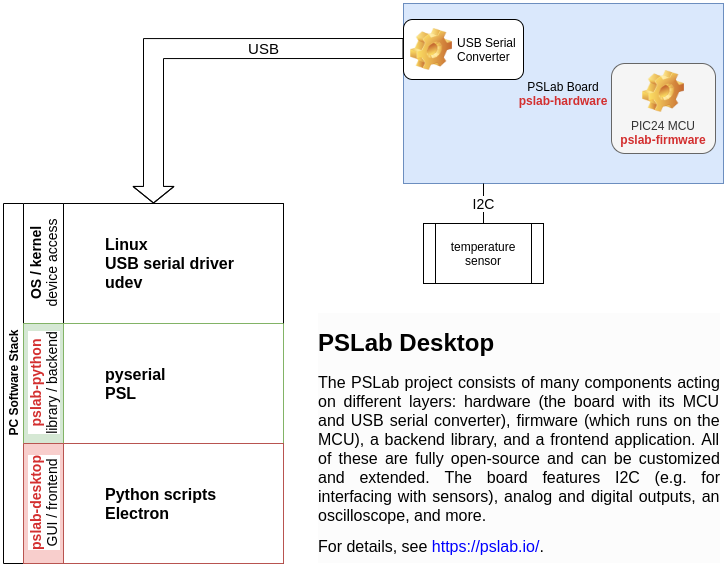Introduction¶



These instructions will help get you started using the Pocket Science Lab (PSLab) hardware and applications.
WARNING: Do not use PSLab with high voltage circuits, in hazardous environments, or without appropriate supervision! |
|---|
What is PSLab?¶
Pocket Science Lab (PSLab) is a device which allows you to explore the world using sensors to record, analyze, and generate signals and data.
At the core is a custom circuit board containing a PIC24 microcontroller which interfaces between the physical world of electronics and sensors, and the digital world of computers (running operating systems such as Windows, macOS, or Linux) and even Android phones!
What can I do with PSLab?¶
“Out of the box” PSLab can be used as an electronics workbench, with a number of built in features, including:
Desktop low voltage power supply with 3 programmable voltage sources (+/-3.3 V,+/-5V,0-3 V)
3 channel[1] oscilloscope with software selectable amplification stages
Multimeter functions including voltmeter and capacitance measurement
Digital and analog function generators
4 channel logic analyzer
In addition, PSLab has several interfaces through which it can work with programmable sensors:
I2C, SPI, UART data buses
Digital and analog I/O
Advanced Plugins/Add-on Modules
Support for acceleration/gyroscopes/humidity/temperature modules, etc.
See the product specifications page and datasheet for more information on features.
Entire stack¶
The full stack for use on desktop computers is described in this diagram:

Limited CH3 range: -3.3V to 3.3V; CH1 and CH2 range from -16.5V to 16.5V
Lack of (software selectable) gain